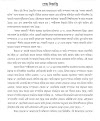TOP NEWS
6/recent/ticker-posts
2025 Calendar Perfectly Mirrors 1941's: A Rare Alignment of Dates
The Reveal
June 21, 2025
Staff Reporter, Guwahati: In a curious twist of chronology, the year 2025 has unfolded with a striking calendrical coincidence: it matches exactly with the year 1941. From the first day of January to the final day of December, every date in 2025 falls on the same weekday as it did 84 years ago, reigniting public fascination with patterns of time and history. January 1, 2025, began on a Wednesday—just as it did on January 1, 1941. This alignment continues throughout the year, with holidays such as July 4, October 31, and December 25 all landing on the same days of the week as they did during the early days of the Second World War. The rare match has quickly gone viral on social media, with users sharing side-by-side calendar screenshots and speculating on deeper meanings, coincidences, and even eerie historical parallels. But the explanation is far more mathematical than mystical. Thanks to the structure of the Gregorian calendar, such alignments occur at irregular intervals based on the leap year cycle and the seven-day week. While partial matches are frequent, a full-year alignment is uncommon. Still, it has happened before, most recently in 1969 and will repeat again in 2030. Yet the current match to a year as historically charged as 1941 has struck a chord, especially in light of today’s global headlines. Although 2025 is not in the grip of a world war, it is nonetheless a time of rising global tension. Armed conflicts in Eastern Europe, the Middle East, and South Asia have stirred widespread anxiety. The ongoing war in Ukraine, recent military clashes between India and Pakistan, and escalating violence involving Israel, Hamas, Hezbollah, and Iran have led many to draw symbolic connections to 1941’s upheavals. While historians are quick to point out that today’s conflicts differ vastly in scale and context, the emotional weight of the parallel remains compelling to many. This renewed public interest in calendar cycles also serves as a reminder that while the world evolves, certain patterns loop back—if only in structure, not substance. The 2025-1941 match is not a glitch in the matrix or a harbinger of doom, but rather a product of how our calendar is designed to function. As history continues to unfold in unpredictable ways, the perfect alignment of dates between these two distant years offers a moment of reflection—on how far the world has come, and how some things, at least on paper, remain the same.
Labels
Ads
Side ads
Total Pageviews of the day
Support Independent Journalism
Ads
The Reveal (YouTube)
Popular Posts

8 Bollywood Films Banned in India for Bold Themes
August 07, 2025

Mega Oil Palm Plantation Drive Launched in Dima Hasao
June 22, 2025

Tight security in Dhakuakhana on Independence Day
August 09, 2022
ASSAMESE NEWS
5/Assamese News/post-list
Ads
Random Posts
10/random/post-list
Last Ad
Popular Posts

Clarification: Dr. Prafulla Kr. Nath on allegation of Plagiarism
September 07, 2021

Dr. P.K. Nath speaks on the Allegation of Plagiarism against him
September 08, 2021

Tight security in Dhakuakhana on Independence Day
August 09, 2022

Freshmen Social of Dhakuakhana College of Teacher Education (B.Ed) held
September 24, 2022

40 bedded ICU to be set up at SMCH
September 08, 2021

Mega Oil Palm Plantation Drive Launched in Dima Hasao
June 22, 2025

Dhakuakhana Teachers Training College celebrates teachers day
September 05, 2022
Crafted with by TemplatesYard | Distributed by Gooyaabi Templates










0 Comments